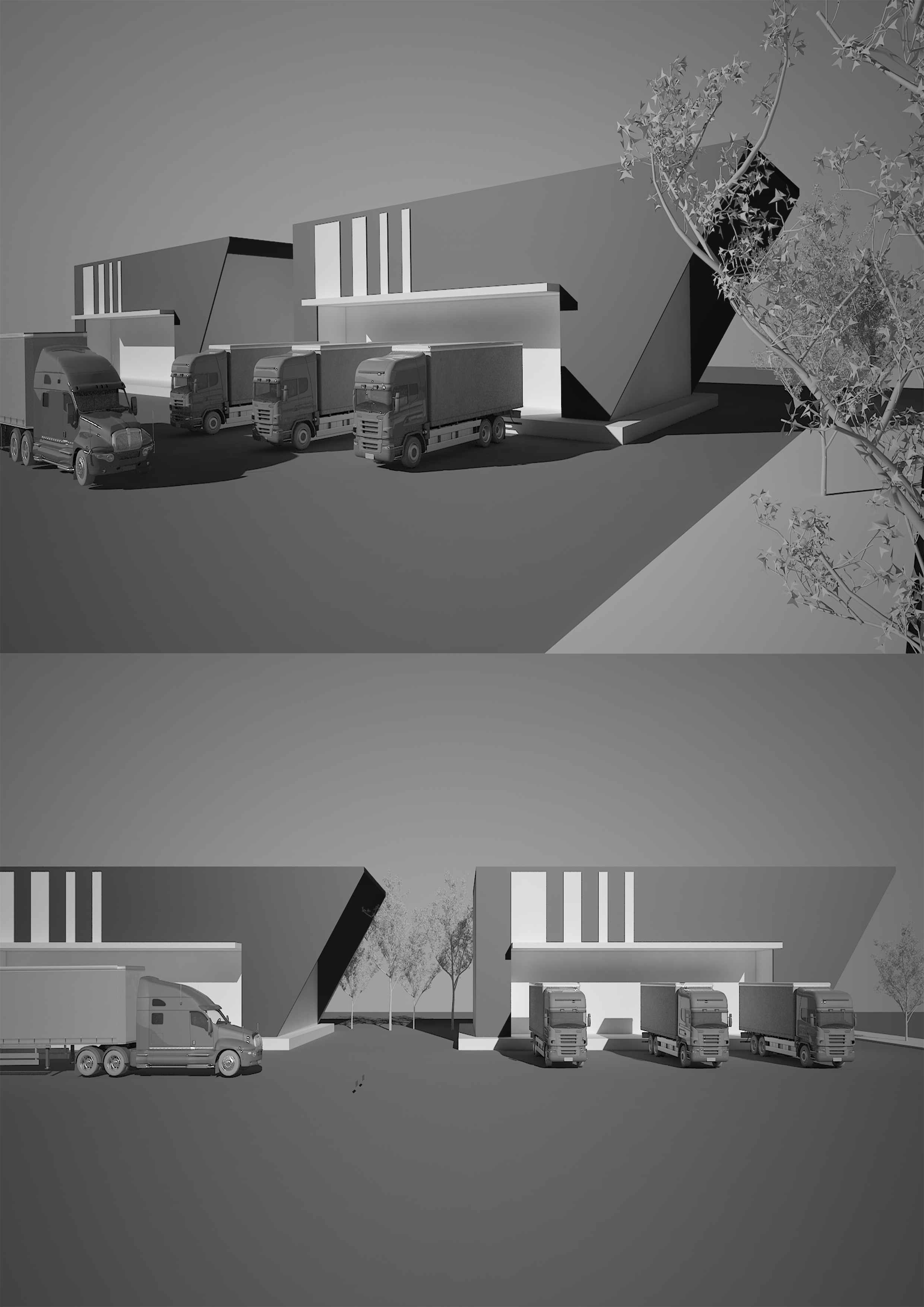แนวทางการจัดการเชิงพื้นที่สำหรับพื้นที่กันชนระหว่างสถานีขนส่งและกระจายสินค้ากับพื้นที่โดยรอบ เพื่อสนับสนุนความอยู่ดีมีสุขของชุมชน
Main Article Content
บทคัดย่อ
การกำหนดพื้นที่กันชนสำหรับสถานีขนส่ง และกระจายสินค้าเป็นหนึ่งในแนวทางการจัดการเชิงพื้นที่ เพื่อลดผลกระทบด้านสภาพแวดล้อมเชิงลบที่จะปล่อยสู่พื้นที่โดยรอบ โดยทั่วไปการกำหนดพื้นที่กันชนจะถูกแสดงออกมาในรูปแบบระยะของพื้นที่กันชน อย่างไรก็ตามพื้นที่กันชนมีศักยภาพที่จะได้รับการจัดการเชิงพื้นที่ เพื่อให้พื้นที่กันชนดังกล่าวถูกใช้ได้อย่างมีประสิทธิภาพมากขึ้นกว่าการปล่อยเป็นพื้นที่ว่างเปล่า บทความนี้ จึงทำการศึกษา และวิเคราะห์แนวคิดความอยู่ดีมีสุขของชุมชนกับการพัฒนาพื้นที่โดยรอบการขนส่งย่านชุมชน เพื่อนำเสนอแนวทางการจัดการเชิงพื้นที่สำหรับพื้นที่กันชนระหว่างสถานีขนส่งและกระจายสินค้ากับพื้นที่โดยรอบสนับสนุนความอยู่ดีมีสุขของชุมชนผ่านการกำหนดรูปแบบการใช้ประโยชน์ที่ดิน หรือลักษณะกิจกรรมในบริเวณพื้นที่กันชน และประยุกต์ใช้ร่วมกับแนวคิดการพัฒนาพื้นที่โดยรอบการขนส่งย่านชุมชน เพื่อกำหนดสัดส่วนการใช้ประโยชน์ที่เหมาะสม โดยการวิเคราะห์แนวคิดความอยู่ดีมีสุขของชุมชนออกมาในรูปของการใช้ประโยชน์ที่ดิน ที่ประเมินถึงการใช้ประโยชน์ที่ดินสนับสนุนความอยู่ดีมีสุขของชุมชนที่ขาดหายของพื้นที่โดยรอบสถานีขนส่งและกระจายสินค้า และเสนอแนะวิธีการประยุกต์ใช้แนวคิดดังกล่าวกับพื้นที่กันชนเฉพาะที่เหมาะสมและผู้ใช้งานหลักในพื้นที่เฉพาะนั้น ๆ สู่การนำไปประยุกต์ใช้กับกรณีศึกษาโครงการสถานีขนส่ง และกระจายสินค้าจังหวัดพิษณุโลก โดยผลการศึกษาที่ปรากฏจะแสดงให้เห็นถึงสัดส่วนของการใช้ประโยชน์ที่ดิน ข้อจำกัด และข้อสังเกตจากการประยุกต์ใช้งาน เพื่อสนับสนุนความอยู่ดีมีสุขของชุมชนกับพื้นที่กันชนโดยรอบ
Article Details
เอกสารอ้างอิง
Calthorpe Associates. (1992). City of San Diego land guidance system: transit-oriented development design guidelines. Sandiego: The City of San Diego.
Department of Environment Malaysia. (2012). Guidelines for siting and zoning of industry and residential areas (2nd ed.). Pudajaya: Author.
Environmental Protection Authority. (2005). Guidance for the assessment of environmental factors: separation distances between industrial and sensitive land uses no.3. Joondalup: Author.
Hilldixon, A., Solley, S. & Bynon, R. (2019). Being well together: the creation of the co-op community wellbeing index. Retrieved August 10, 2020, from https://communitywellbeing.coop.co.uk/media/1026/the_community_wellbeing_index_-_full_report.pdf.
Lismore City Council. (2000). Lismore development control plan-part a chapter 11: buffer areas. Retrieved January 9, 2020, from https://lismore.nsw.gov.au/files/Part_A_Chapter_11_Buffer_Areas_LEP_2000.pdf.
Maas, F.M. (1976). In Suess, M.J. & S.R.Craxford (Eds.). Manual on urban air quality management. Copenhagen: World Health Organization.
Markovich, J., Slovinec D’Angelo, M. & Dinh, T. (2018). Community wellbeing: a framework for the design professions. Ottawa: The Conference Board of Canada.
Wiseman, J. & Brasher, K. (2008). Community wellbeing in an unwell world: trends, challenges and possibilities. Journal of Public Health Policy, 29, 353-366.


